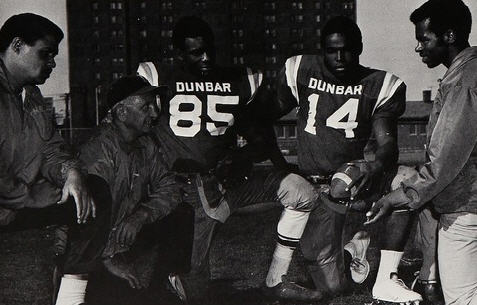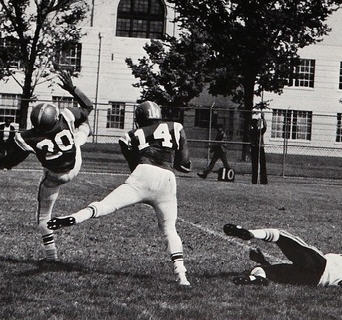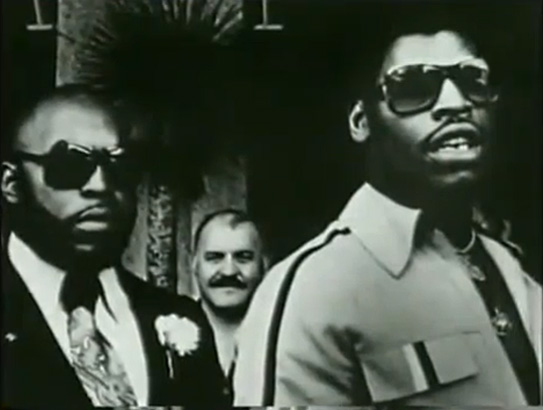

VIRGIL CARTER, "THE BLUE DARTER" OF BYU
HELMET HUT NEWS/REFLECTIONS January 2016:
VIRGIL CARTER,
"THE BLUE DARTER" OF BYU
By Dr. Ken
I am admittedly an old guy
with old fashioned values. The
three part series that ran
recently within the HELMET
NEWS/REFLECTIONS area of
HELMET HUT
(http://www.helmethut.com/newsindex.html,
September, October, and November
2015 columns) offered numerous
reasons and what could be
construed as complaints,
explaining the relative demise
of the modern game. A topic not
broached, was a strongly held
opinion that college athletics
are for student-athletes, not
pay-for-play athletes. Like most
college students of the 1960’s,
I held a variety of jobs while
attending classes, with the
additional responsibilities of
lifting weights, constantly
running, and both practicing and
playing football. My employment
included filling the roles of
manual laborer, ironworker,
bouncer, short order cook, truck
driver, and night time office
cleaner/janitor. My scholarship
included the early morning
and/or late night
responsibilities in the
university vivarium as the
animal feeding and waste removal
expert. Simply put, I was the
student in charge of feeding and
cleaning the cages of all of the
monkeys, chimps, gibbons,
coatimundis, and cabybaras
(100-140 pound rodents that live
in the riverbeds of South
America) that were used for drug
related experiments in the
science labs. My compensation
equated to perhaps $10.00 per
hour at today’s rates.
HISTORICAL INSERT
Reading the above paragraph,
bemoaning the fact that as a
typical college student, even
one with the benefit of
scholarship money, I was
relegated to a succession of low
paying and menial jobs in order
to pay bills, there is another
side to the facts. As a bar or
club bouncer, I was paid the
standard minimal wage the
industry offered for the
privilege of tossing drunk and
unruly patrons from the premises
and I did this at a number of
establishments. However,
eventually working my way up to
the point that I directed
backstage security for a number
of rock bands and on a regional
basis for Motown Records tours,
worked for Bill Graham, and
served as an off-stage personal
bodyguard for known rock and
roll industry celebrities, I was
paid exceptionally well for the
time put into the endeavor. My
close and late friend Joe Tuths
handled the West Coast security
for the first three Led Zeppelin
tours, calling me to offer,
“free room, board, and travel,
$1000.00 per week in cash, and
all of the drugs and alcohol you
want.” As a teetotaler, I
obviously passed on the latter
inducements as he knew I would,
but for the era, the rest was
big money and I signed on. Made
worse by Zeppelin’s own, “in
from Great Britain” personal
security force and manager, we
had our hands full but there was
money to be made in the business
from the late 1960’s through the
mid-1970’s. Other former
football players like Bob “Mr.
Goodbar” Bender, a University of
Buffalo transfer slated to play
middle linebacker at Kent State,
instead left for a security job
with the Rolling Stones,
fortuitously vacating the
position for an up-and-coming
Jack Lambert.
 |
The captain of the 1969 Dunbar Vocational High School team in Chicago was Laurence Tero, number 14
Perhaps the most well-known
football player turned
bouncer from that same era
was Laurence Tero of
Chicago. The star of Dunbar
Vocational High School’s
successful 1969 football
squad, Tero was a 6’1”, 195
pound two-way back who had
been the league wrestling
champion at 165 pounds his
junior year. Encouraged to
lift weights by his older
brothers for the express
purpose of better protecting
himself in the exceptionally
impoverished and dangerous
neighborhood he and his
eleven siblings lived in,
Tero earned a football
scholarship to Prairie View
A&M University but was
expelled after his freshman
year.
Utilizing his enhanced-to
235 pounds muscular size,
strength, and a great deal
of natural charisma, he
became an effective and
exceptionally professional
bouncer at Chicago’s busiest
and most dangerous dance
clubs and a personal
bodyguard for celebrities
visiting the city. Building
a nationally known
reputation, Tero altered the
spelling of his name to
Laurence Tureaud. I met him
when he served as the
personal bodyguard for
heavyweight boxing champion
Leon Spinks. For those who
lived in or around Leon’s
hometown of St. Louis, the
late 1970’s and especially
during his brief reign as
champion after defeating
Muhammad Ali on February 15,
1978, provided almost daily
proof that Leon needed
Tureaud’s assistance and
protection. What seemed like
a succession of Leon’s new
cars were reported as stolen
after being found wrapped
around telephone poles or
trees throughout the St.
Louis area in the early
morning hours, with Leon
always claiming that he
“didn’t know nothin’” about
such events. Leon and/or his
brother Michael had
disagreements, arguments, or
true legal battles with
local police on what seemed
like a regular basis,
sometimes involving more
serious infractions and
others, simple but illegal
acts such as parking on the
sidewalk of the St. Louis
Airport terminal because “it
was the only available
space”! Not having yet
changed his name once again
from Tureaud to “Mr. T,” he
had, due to his work with
Spinks, actor Steve McQueen,
and others of that stature,
elevated his daily fee from
$500.00 to $3000.00 per day!
Tureaud was quick to donate
part of his winner’s fee
from the World’s Toughest
Bouncer Contest to his
church and was always
involved with improving the
life of children who were
growing up in the same type
of social and economic
environment he had survived.

